Why I made this post. Lately, I hear from parents who feel stretched thin by meltdowns, bedtime battles, and the constant push-pull of routines. I wanted a simple guide you can actually use, not another list that sits in a notebook. This post brings together 19 positive parenting solutions you can reach for when chaos shows up. My goal is to give you calm, clear options you can try tonight, even after a long day.
Who it’s for. If you’re a mom or dad who wants a calmer, more connected home, this is for you. Maybe you’re just starting out, or you’ve been at this a while and need fresh ideas. You care about respect, steady routines, and real conversations with your child. You want tools that fit real life—days that zoom by, meals, rides, and a little screen time—without piling on guilt.
1. Use Positive Reinforcement Techniques
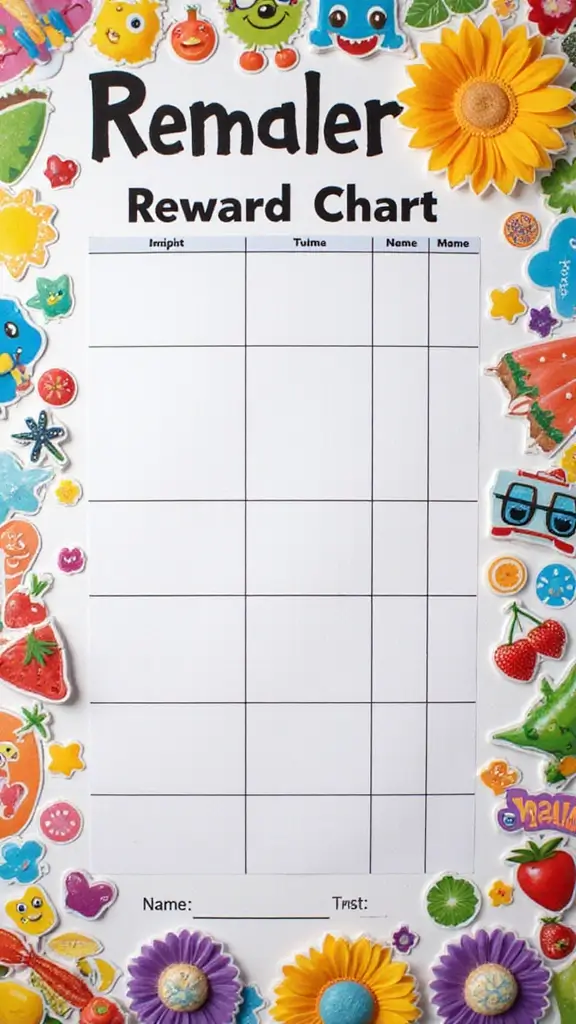
If you’re tired of constant reminders and you want behavior to improve, try positive reinforcement. This approach shifts attention from mistakes to wins, making kids want to do the right thing.
When you notice good actions, name them specifically and warmly. Your child learns what to repeat, and their self-esteem grows with each little success. A calm, positive tone helps them feel safe and capable.
Here are practical methods you can start today:
– Sticker chart for quick wins: give a sticker for chores, sharing, or listening. After several stickers, they pick a small reward.
– Specific praise: say exactly what you saw, like, “You shared your blocks so we could finish the game.” Clear praise shows the behavior you value.
– Reward system: offer simple rewards, such as extra story time or choosing dinner, for consistent positive behavior.
– Verbal affirmations: simple, short phrases help, for example, “I’m proud of how you waited your turn.”
Implementation tips:
– Start with 2–3 behaviors this week and be consistent.
– Praise often, even for small steps.
– When misbehavior happens, acknowledge the issue, then highlight the effort you want to see next.
By creating a positive environment, you lay a foundation for ongoing growth and learning. Your child feels trusted and motivated to try again.
Product Recommendations:
• REGELETO 80 Pack Incentive Reward Chart
• Intelligent Change Mindful Affirmations
• Caught Being Good Coins – Bulk Set of 144 Tokens
2. Establish Routines

Are you trying to make mornings calmer and transitions easier for your child? A simple daily rhythm can do that. Routines give kids predictability, which lowers anxiety and helps them handle change with more confidence.
Benefits you’ll notice
– They know what comes next, so stress drops.
– Consistent steps make transitions smoother.
– Your child builds independence by following a plan.
– A steady rhythm supports positive behavior without nagging.
How to start
Choose two routines to begin: morning and bedtime. Keep them clear and short. Involve your child so they feel ownership. Use a calm cue, like a small timer or picture cards, to signal the next step. Stay flexible and adjust when needed.
Tools that help
– Visual schedules with simple pictures or words.
– A fixed order every day, with easy choices.
– A checklist your child can mark off.
– Gentle reminders, not scolding.
Sample routines
Morning: wake up, bathroom, brush teeth, wash face, get dressed, breakfast, grab bag, and go. Bedtime: bath, pajamas, brush teeth, story, lights out. Add a soft lamp or familiar scent to cue the end of the day.
What to expect and how to adjust
Routines won’t solve every day. Some days are longer or busier. Note what works, trim steps, and keep the routine doable. With practice, your child follows easier and feels calmer.
Product Recommendations:
• Godery Large Visual Schedule for Kids Chore Reward Chart
• Classroom Timers for Teachers Kids Large Magnetic Digital Timer 2 Pack
• Chore Chart for Kids Dry Erase Chore Board ADHD Tools for Kids to Do List
3. Implement Effective Discipline Strategies

Discipline can guide behavior and protect your bond with your child. You want calmer days and clearer rules. With a simple toolkit, you can teach without yelling.
– Time-outs as a cooling-off pause
When emotions rise, a short pause helps your child reset. Explain it’s for cooling down, not to scare or shame. Keep it to a brief moment, like one minute per year of age as a general guideline.
– Natural consequences teach, not punish
Let the action lead to the natural result. If a mess is made, your child cleans it up. If a toy breaks during rough play, the repair or replacement becomes the next task.
– Clear, calm rules you discuss together
Create two or three simple rules with your child. Keep them short and clear so they are easy to remember. Post them where your child can see them every day.
– Stay calm in the moment
Your calm tone matters more than long lectures. Use simple words and a slow pace to explain. Breathe and show how you stay in control.
– Make the consequence fit the action
Choose consequences that match what happened. Too harsh or too soft both miss the point. Keep the link between action and result clear.
– Be consistent with follow-through
If you set a rule, you enforce it. Consistency helps kids predict outcomes and feel safe. Use a simple if-then plan to stay steady.
– Use praise to reinforce good choices
Praise the moments when your child handles a tough moment well. Name the exact behavior you want to see. A hug or a small shared chore can reinforce it.
– Keep routines predictable
Routines reduce power struggles and guesswork. Regular meals, study times, and wind-down moments help kids know what to expect.
Product Recommendations:
• Positive Parenting: Tools and Tactics to Support Your Child in Competiti…
• The Calm Down Jar: A Social Emotional
• Rhyming
• Early Reader Kid’s Book …
• CUTHOR Divisibility Rules Poster – Math Anchor Chart for Kids Classroom …
4. Practice Patience and Understanding

If you care for a child with special needs, patience can feel heavy. You are not alone. Small habits can ease tense moments and keep your home calmer. It starts with tiny choices you make every day. Over time, your calm can spread. Consistency matters more than speed.
Practical steps you can start today
– Breathe before you respond.
– Name the feeling out loud.
– Celebrate small wins, even tiny steps.
– Ask questions, not blame, to learn what happened.
– Slow down and offer a choice to pause.
– Create a calm-down corner with tools like a soft toy, headphones, or dim lights.
– Seek support from parent groups or a clinician for extra guidance.
– Build predictable routines for meals, school mornings, and bedtimes.
– Take care of yourself with rest, healthy meals, and short breaks.
– Set clear, simple limits when you need them.
– Use brief, clear phrases when you respond.
– Have a backup plan for busy days, like a quiet activity ready to go.
– Remember that progress can be slow, and that’s okay.
With patience, you can help your child grow and your family feel more at ease.
Product Recommendations:
• hand2mind Ten Frame Sensory Bubble Poppers
• Soundcore Anker Life Q20 Hybrid Active Noise Cancelling Headphones
• GUND Cozys Collection Cow Stuffed Animal
5. Share Responsibilities

You want a calmer home and kids who help. Sharing tasks lightens your load and makes children feel they belong. It teaches teamwork and real life skills they’ll use every day. You can start with simple steps and grow from there.
– Younger kids: set the table or help with meal prep. They’ll love placing plates and watching food come together.
– Older kids: sort laundry or take out the trash. They handle bigger chores and gain independence.
– Involve them in a family chat about weekly chores. When they help pick the tasks, they own them.
– Praise their effort and progress. A kind word after a job is done boosts confidence.
Create a simple routine. Hold a short family meeting to assign chores and post a clear chart. Let kids choose from a few options to boost buy-in. Check off tasks as they’re completed and celebrate small wins, like a clean counter or tidy living room.
If a child pushes back, break the job into small steps and show how to do it. Use a timer for quick tasks and rotate chores to keep it fair. The payoff appears in smoother mornings, more confidence, and a true team vibe at home.
Customize chores to fit your home. Use a simple chart in the kitchen so everyone can see what to do. Rotate tasks weekly to stay fair and show new responsibilities. This approach builds a family culture where chores are normal. Begin this plan this week and watch calmer mornings and cleaner spaces. Ask your kids what they liked best and adjust. Keep it gentle at first; you are teaching, not nagging.
Product Recommendations:
• Magnetic Dry Erase Chore Chart
• Antonki Digital Timer for Kids
• Holographic Rainbow Small Star Stickers
6. Encourage Creative Expression
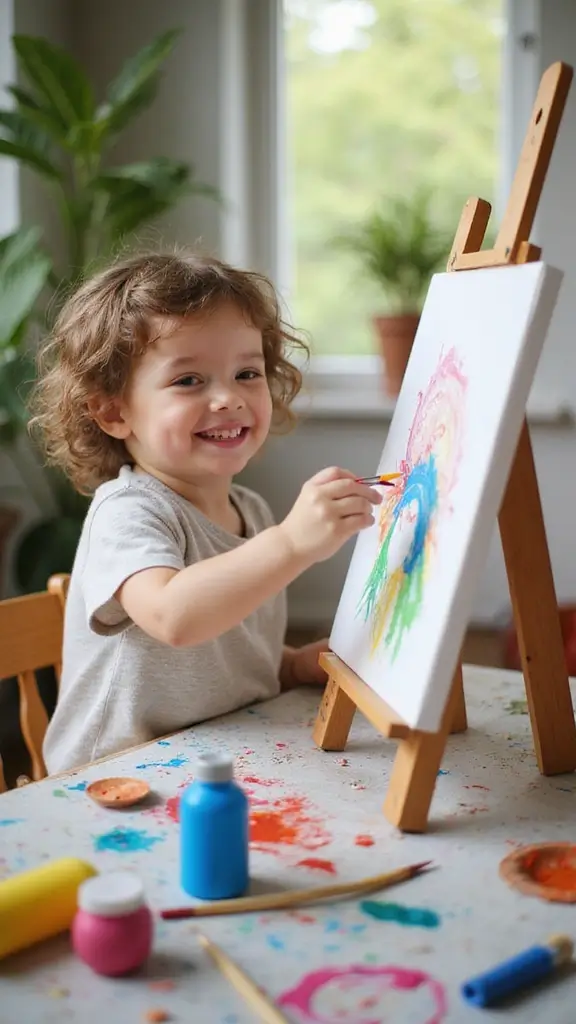
If your child struggles to say how they feel, creative expression gives them a safe way to share emotions without words. Art, music, and pretend play can make a real difference in how they see themselves. You can fit these ideas into everyday life with simple, low-pressure steps.
– Create a flexible art corner with easy-to-use supplies. A sturdy table, good lighting, and a small bin of pencils, crayons, paints, and clay can last a long time. Let them choose what to work with and how to use it.
– Make music time welcoming. Keep simple instruments handy—shakers, a drum, or a xylophone. Invite your child to make sounds, rhythms, and melodies in their own way.
– Design a space for pretend play. Offer costumes, puppets, boxes, and props. Let them lead the scene, and you join in as a supportive partner.
– Try short classes or lessons together. An art club, a beginner music session, or a quick drama workshop can spark interest and build confidence.
– Focus on the process, not the product. Praise effort, choice, and persistence. Ask open questions and listen for clues about what they’re feeling.
– Keep it regular but low-pressure. A 15-minute creative window a few times a week can lift mood and boost self-esteem.
Product Recommendations:
• Soucolor Art Supplies
• 192-Pack Deluxe Art Set Drawing Painting Supplies
• Kids Musical Instruments
• 33Pcs 18 Types Wooden Percussion Instruments
• Born Toys Dress Up & Pretend Play Kids Costumes Set Ages 3-7
7. Maintain Open Communication

Open communication with your kids builds trust and helps them share what they feel. When your door stays open, small worries don’t grow into big problems.
– Safe space for talks Choose a calm moment and a comfortable spot where your child can speak freely. Put away phones and give your full attention, so they know they matter.
– Invite questions and concerns Let your child know questions are welcome, always. Respond without judgment so they keep sharing, even the hard stuff.
– Use age-appropriate language Use words your child can understand, not long phrases. Break big topics into small, clear parts.
– Regular check-ins Schedule a short weekly chat, like 10 minutes, so you both prepare. Ask how they feel and what’s on their mind.
– Active listening Focus on what they say, not on fixing it right away. Reflect back what you hear to confirm you understand.
– Validate feelings Name their emotions softly, even if you disagree. Say, “That sounds tough; I get why you feel that way.”
– Model openness Share a simple part of your day to show honesty. Let them see you handle hard talks with calm.
– Solve with a plan Help them pick one small step to try. Schedule a quick follow-up to see how it went.
With steady practice, open communication becomes a helpful part of family life.
Product Recommendations:
• Heartfelt Conversations – A Family Communication Journal: 100 Prompts and Activities
• MEROCO Feelings Emotions Cards for Kids Therapy
• How to Talk So Kids Will Listen & Listen So Kids Will Talk
8. Celebrate Uniqueness

You want your child to feel seen and proud of who they are. Celebrating their uniqueness helps you raise a confident, kind kid. When you focus on what makes them different, you build a home where every voice is heard.
– Craft a simple scrapbook that highlights their achievements, interests, and proud moments with photos, drawings, and keepsakes.
– Have regular family check-ins to talk about what makes each member unique.
– Let them explore freely with clothes, hobbies, and friends to discover what they love.
– Affirm their worth by naming what makes them special and valuable.
These ideas work for all families. They keep you honest and practical. Start with one small habit today. You will see simple results.
– Highlight individual strengths by naming talents that stand out, like kindness or art.
– Avoid comparisons by focusing on their own progress, not what others do.
– Use daily rituals such as a bedtime share about one unique thing they learned.
– Invite their input when planning family activities to honor their choices.
Little steps add up to big, lasting changes. You can start today and see the difference. Keep talking with your child, notice small wins, and adjust what you celebrate. Your effort grows trust, and your child learns to take pride in being themselves.
Product Recommendations:
• Vienrose DIY Scrapbook Photo Album Kit
• This Family of Ours: A Keepsake Journal
• Soucolor Art Supplies
• 192-Pack Deluxe Art Set
9. Limit Screen Time

If you worry about screen time, you’re not alone. Too much screen use can affect behavior and social skills in kids. You can shape healthier habits with clear, steady rules. Here are practical steps you can start today. You can tailor these ideas to fit your child and your family life.
– Set tech-free zones. Create spots where devices stay away, like during meals and in bedrooms. This helps your child focus on people and conversation. This rule helps meals stay calm and connected.
– Define daily limits. Agree on a clear cap for recreational screen time each day. For example, no more than 60 minutes after homework, chores, and meals.
– Offer real-world activities. Fill the day with hands-on fun: outdoor play, crafts, reading. These options give your child color, motion, and new skills.
– Be a good role model. Be a good role model. Show how you use devices by putting your phone away when talking to your child. Kids copy what they see, so stay mindful with your own screen use.
– Create a simple family plan. Create a simple family plan. Write quick rules for device use at home and share them. Review the plan weekly and adjust if needed.
These steps work best when you stay consistent. Some days will be hard, and moods change. Start with one rule this week, then add another next week.
Product Recommendations:
• The Original TAPPLE Board Game
• PACEARTH Flying Saucer Swing Set
• Klever Kits DIY Wooden Race Cars Craft Kit
10. Prioritize Self-Care

Being a parent to a child with special needs is rewarding, but it can also wear you down. When you take care of yourself, you bring more calm, focus, and patience to your family. Self-care isn’t selfish; it’s the steady fuel you need to stay present for your child and everyone who depends on you.
– Schedule regular breaks: Block out 15 minutes to recharge. Use it for a quiet walk, a warm drink, or a few slow, deep breaths. If 15 minutes is hard, start with five minutes.
– Reach out for support: Let friends, family, or a local support group know when you feel overwhelmed. They can offer a listening ear or practical help, like a ride or a meal.
– Choose joy routines: Pick activities that bring you calm and joy. A short yoga session, a favorite podcast, or a good book can reset your mood and energy. Keep a tiny journal about moments when self-care helped.
– Honor your feelings and seek help: Let yourself feel the emotion of the moment. If stress stays high, talk to a counselor or doctor. Set a simple goal for this week, like one break each day.
Taking care of yourself models balance and self-respect that your kids will notice. Even small acts matter. Try it this week and notice the difference.
Product Recommendations:
• Yoga Mat
• PAPERAGE Lined Journal Notebook
• ASAKUKI Essential Oil Diffuser
11. Create a Support Network

Feeling overwhelmed? You’re not alone. A steady support network can ease stress and boost your parenting skills.
Ways to build your network
– Join local or online parenting groups that focus on special needs to share tips, swap resources, and feel supported.
– Attend workshops and seminars for practical tools you can use at home with your child.
– Connect with parents who have children with similar needs for friendship, real talk, and practical advice.
– Reach out to professionals, like therapists or special education consultants, for expert guidance you can actually apply.
– Invite a trusted parent to co-host a monthly meet-up so the group stays active.
– Set a simple monthly goal, such as sharing one resource or attending one event together.
Start small by picking one group to try this month.
Be clear about what you hope to get from the network.
Ask questions and share what works for your family.
Keep notes on ideas that help and who offers good resources.
Schedule short check-ins with yourself to keep the network alive.
If a group is not a good fit, try another one next month.
Remember to set boundaries to protect your family’s time.
A strong support network can lift you on tough days, offer fresh ideas, and remind you that you are not alone.
It can take time, but small steps add up.
Product Recommendations:
• The Honey Bees: Recharge Mommy Bee
• The Complete Child Custody Journal: Your Comprehensive Tool for Documenting Child Custody Matters
• The Parent’s Guide to Special Education: Navigating the System for Your Child’s Success
12. Set Realistic Expectations

Realistic expectations act as a map for your child’s growth. For kids with special needs, goals should fit what they can do now and what they can reach with steady effort. This approach builds confidence and reduces daily frustration. It keeps you practical and hopeful, not overwhelmed.
– Know your child’s strengths and growth areas: Start by listing what they do well and where they need help. Use this map to pick goals that fit both the gifts and gaps your child has.
– Break big goals into small milestones: A big target becomes 3–5 small steps you can check off on a chart. Celebrate every little win with a sticker, a high five, or a special bedtime story.
– Adjust as growth happens: Growth can shift the path quickly. If your child learns faster in the morning, move tougher tasks to that time and ease up later.
– Discuss the plan with your child: Talk about the goals when you both are calm. Ask for their ideas and let them choose a small one to try this week together.
With clear, reachable goals, your child builds self-esteem and stays on a steady pace of progress.
Product Recommendations:
• Goal Setting Chart
• Fundraising Thermometer
• Utron 80 Pack Reward Chart for Kids
• The Girl Who Never Made Mistakes: A Growth Mindset Book for Kids
13. Introduce Mindfulness Practices

How mindfulness helps your child
Mindfulness practices help your child handle anxiety and improve emotional regulation. Simple moves like breathing exercises or gentle stretches can make a real difference, even for kids with special needs. You don’t need fancy gear—just quiet time and patience.
– Practice deep breathing together.
– Try kid-friendly yoga or nature walks to invite calm.
– Let them express feelings with a quick mindfulness journal or drawing.
– Use short guided meditations designed for children.
To start, pick a daily 3–5 minute window after homework or before bed. Keep it consistent for a few weeks, and add time if your child asks. Create a small, cozy space with soft light, a comfy mat, and quiet corners.
When you lead, use simple prompts. If anxiety spikes, return to the breath, a light stretch, or a short walk outside. Mindfulness isn’t a cure, but it gives your child tools to calm the body and name feelings.
With practice, your child learns to notice tension, slow thoughts, and choose a calm action. Begin today, stay steady, and watch the calm grow.
Product Recommendations:
• Gaiam Kids Yoga Mat
• The Mindfulness Journal for Kids
• hand2mind Luna The Calming Kitty
14. Involve in Community Activities

If your goal is for your child to feel they belong and grow social skills, start with local community activities. These experiences give everyday chances to talk, listen, and cooperate with kids and adults in real settings. They also build confidence as your child finds small wins in new groups.
– Enroll them in local clubs or sports they enjoy.
– Volunteer as a family at local charities, teaching teamwork.
– Attend fairs or festivals to expose them to different social settings.
– Encourage them to share ideas at community meetings.
These community activities for kids offer real-life practice in conversation, listening, and teamwork. Your child learns to wait for a turn, share, and cheer others on. The rewards show up in school, play, and family meals when they can share a story from the event.
Practical tips to get started
– Choose one activity that fits their interests.
– Ask the group if you can join for a trial period.
– Set a gentle schedule and keep the first outings short.
– Talk about what they liked and what felt hard.
– If they feel overwhelmed, give them a small, quiet role.
– Celebrate small wins with praise and a simple reward.
By taking part in community activities, you help your child grow socially.
Product Recommendations:
• Kids Against Maturity Card Game
• Family Board Games for Kids and Adults
• Outdoor Adventure Set for Kids
• DIY Craft Kits for Kids
15. Use Visual Supports
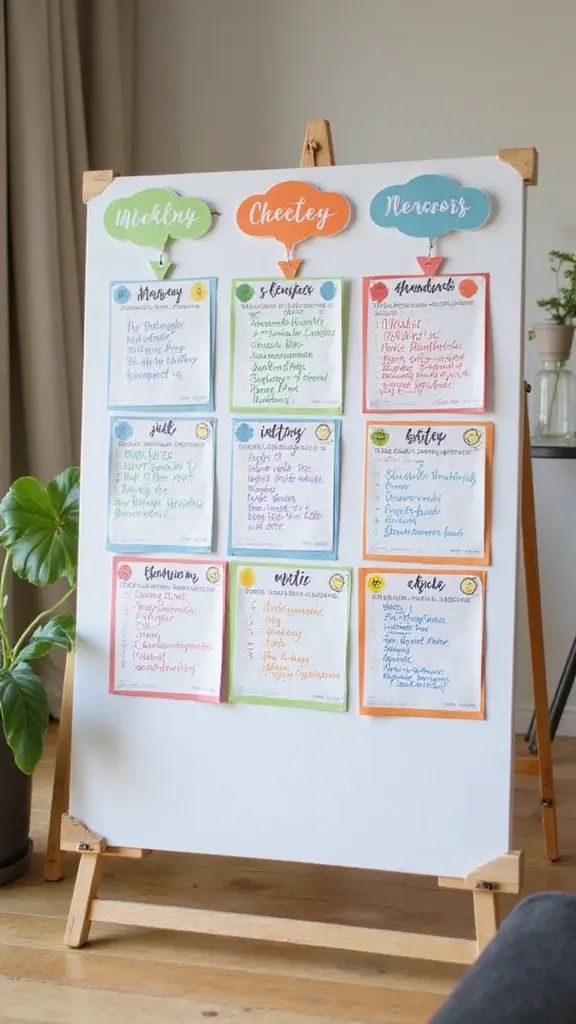
If your child struggles with chores, routines, or school tasks, visual supports can help.
These simple cues turn spoken instructions into clear steps and give the day a steady rhythm.
Start small and grow the system as your child gains confidence.
– Picture schedules
A picture schedule maps the day into easy steps your child can follow.
Use photos or simple icons for activities like breakfast, school, and bedtime.
Post it where it’s visible, and add arrows or color to show the order.
If your family changes plans often, keep a backup plan card handy.
– Visual checklists
Visual checklists break routines into manageable tasks.
Your child marks items off as they finish, which builds a sense of success.
Keep lists short—three to five steps—to stay clear and avoid overwhelm.
Review the list at a consistent time each day to build a routine.
– Labels around the house
Labels at eye level cue actions and expand vocabulary.
Pair words with simple pictures on doors, drawers, and switches.
Use color codes so siblings can help and so actions stay predictable.
Place labels where your child looks most often for guidance.
– Visual timers
Visual timers show how much time is left in an activity.
The ticking clock or color bar helps with transitions and pacing.
Use a kitchen timer or a sand timer for a basic option beginners prefer.
Let your child see the countdown during tasks to stay focused.
Together, these tools improve communication and reduce guessing.
They can cut down delays and mood slips in busy mornings.
Your child gains independence when they see what to do next.
Implementation tips are simple and practical.
Start with one or two supports that fit your child’s strengths.
Make visuals with your child so they feel ownership.
Choose durable materials like laminated cards and sturdy boards.
Review and adjust the system weekly, keeping what helps and removing what doesn’t.
Current trends show new options without losing the basics.
Digital visuals and apps offer prompts, but many kids still respond best to physical boards.
Keep visuals simple, consistent in color, wording, and placement.
If you try digital tools, keep a low-tech backup handy for easy access.
Common questions addressed.
Do visuals replace talking? No, they support your words and make directions clearer.
Will my child resist? Give time, praise small wins, and adjust slowly.
What about nonverbal children? Use pictures, signs, and clear gestures to convey steps.
With these practical visuals, you can build smoother days and calmer routines.
Adapt the system to fit your child, your home, and your schedule.
A steady, visual approach helps everyone stay on the same page and move forward.
Product Recommendations:
• Godery Large Visual Schedule for Kids Chore Reward Chart
• To Do List Notepad 6 Pack
• Yunbaoit Visual Timer with Night Light
16. Encourage Independence
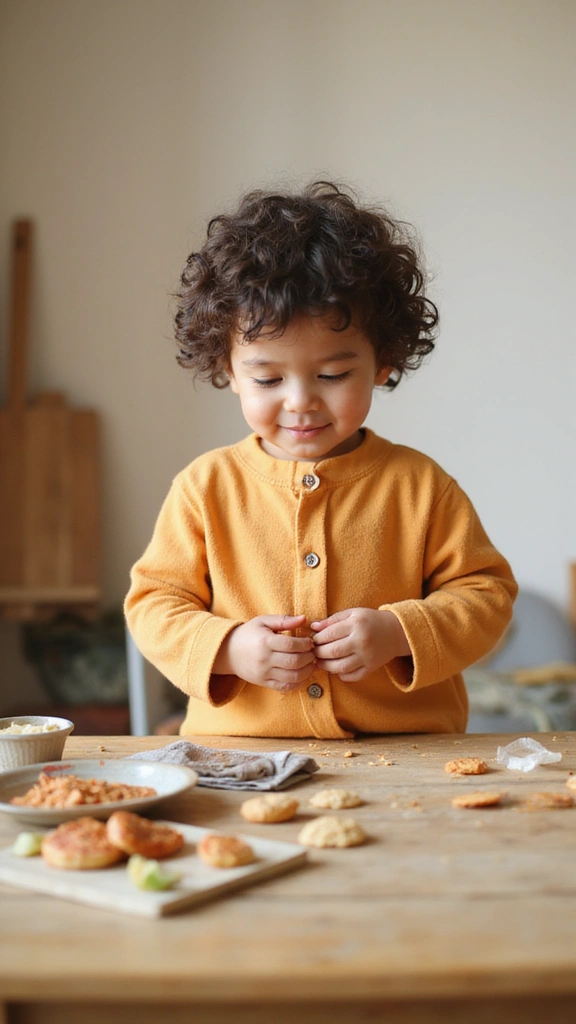
Encourage Independence
You want your child to feel capable and sure of themselves. When they handle small tasks, their confidence grows. Independence gives real, practical life skills they will use later.
– Start with simple chores they can own, like dressing themselves or helping set the table. These tasks are doable and give them a sense of pride.
– Let them choose sometimes. Offer options for clothes, snacks, or activities. Decision making builds control and focus.
– Notice and celebrate specific successes. Say, “You did that on your own,” and point to the action, not the praise itself. This reinforces what they did.
– Be there for support, not control. Ask guiding questions and offer quiet help if they get stuck. Let them lead while you stay nearby.
By weaving independence into daily life, you help your child handle stress and solve problems calmly. With steady practice, they gain self-reliance for school, play, and friendships. It’s not about perfection; it’s about progress.
Make it real with a simple routine. Put a small chart on the fridge showing key tasks like dressing, brushing teeth, and tidying toys. Let them check off items. Clear steps reduce reminders and give a sense of order. Expect slips, handle them gently.
Product Recommendations:
• Magnetic Dry Erase Chore Chart
• 5-Shelf Weekly Clothes Organizer for Kids
• Extra Large Property Management Make Ready White Board
17. Develop Coping Strategies
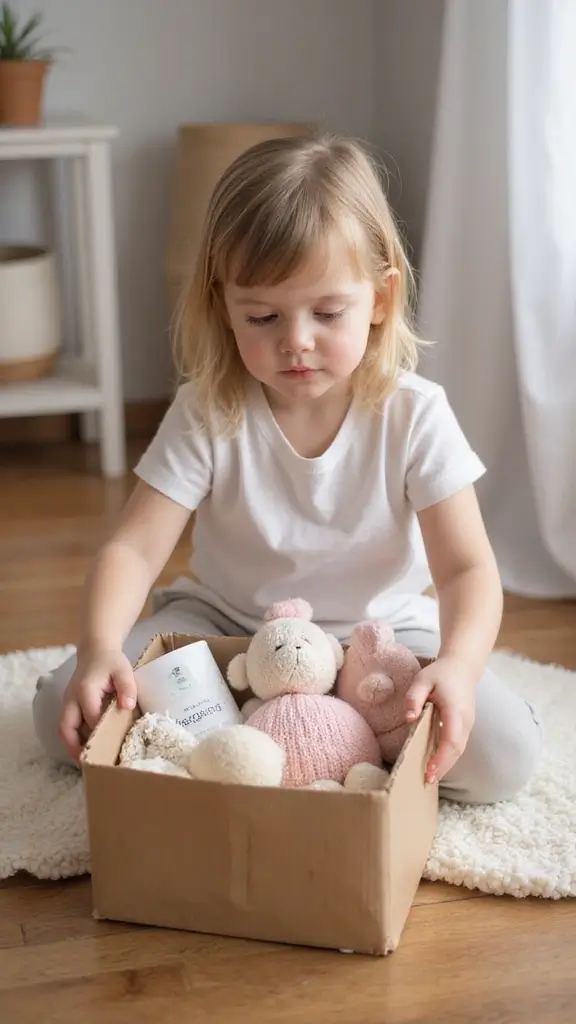
Kids face stress every day. You want them to stay calm and confident when trouble pops up. Teaching coping skills now helps with emotional growth and resilience for life.
– Role-play coping moments — Practice short scenes where your child feels frustrated and learns to pause, breathe, and choose a calm response.
– Discuss coping options — Talk about easy strategies like taking breaks, asking for help, or stepping away to cool down.
– Create a calm box — Fill a small box with items such as stress balls, fidget toys, a soft cloth, or a favorite book to reach for when feelings surge.
– Encourage journaling or art — Let your child draw, doodle, or write a quick note to express what they feel.
Start small and be steady. Practice for a few minutes each day, and remind your child that mistakes are part of learning. Keep a visible plan, like a chart or calendar. Celebrate small wins to keep motivation high. If one method doesn’t click, try another. Coping skills grow with practice, not with a single moment. You can adapt these ideas for school, home, and programs. Keep it simple, and your child will feel seen. Your routine helps kids feel safe. Slow, steady steps beat fast, loud plans. You will see small changes as you practice.
Product Recommendations:
• Ortarco Stress Balls
• Fidget Toys 120 Pack
• PERRYHOME DIY Journal Kit
18. Read Together Regularly

If you want your child to grow with words and feel closer to you, reading together is a strong, simple method. You can turn it into a daily habit that fits your life. Consider mixing formats, like print books, ebooks, and audiobooks, to keep it fresh. This section shares practical steps you can start this week.
Simple steps to start today
– Choose age-appropriate books that reflect your child’s interests.
– Read in a cozy spot you both enjoy.
– Discuss the story as you go by asking short, open questions.
– Use expressive voices and helpful gestures to show how characters feel.
– Let your child pick a book now and then to build ownership.
– Set a regular reading time so it becomes a steady routine.
– Pause to link scenes to real life and emotions your child can relate to.
– Ask after-reading questions to check comprehension and memory.
– Try quick activities after reading, like drawing a scene or acting out a moment.
Reading together strengthens literacy and thinking over time. The bond you build around stories gives kids confidence to talk and ask questions. These habits fit busy days and can grow with your child.
Product Recommendations:
• Just Go to Bed (Little Critter) (Pictureback)
• Nestl Reading Pillow with Shredded Memory Foam
• RUIZU 83GB Android MP3 Player with Bluetooth and WiFi
19. Celebrate Progress and Achievements

Are you trying to help your child stay confident and excited to try new things? Celebrating progress, even tiny steps, helps kids believe in themselves. It also shows that effort earns praise, not just results. This approach fits with positive parenting and supports healthy child development.
– Start a family milestone ritual: Pick a simple moment to honor wins, like a special dinner, a short outing, or a game night. When your child hits a goal—finishing a reading book, solving a tough math problem, or sticking with a habit—pause, smile, and cheer.
– Build a visible progress board: Use a corkboard, whiteboard, or photo wall. Add a sticker, checkmark, or photo each time your child makes progress. It becomes a proud display that reminds everyone of growth.
– Offer kind, concrete praise: Praise the effort, not just the win. Say things like, “I saw how you kept trying when it was hard,” or “Your persistence paid off.” Write short notes for a keepsake.
– Encourage reflection and next steps: Ask questions that help them learn. For example, “What helped you today?” “What was tough, and how can you tackle it next time?” Let them pick the next small goal.
– Document and celebrate small wins: Save a few notes, take a photo, or add to the board. Let your child add their own item to note progress.
Celebrating progress creates a warm, motivating home. Kids feel valued and see that effort matters.
Product Recommendations:
• Behavior Reward Chart System
• Do You Really Know Your Family? A Fun Family Game Filled with Conversation Starters
• MaxGear 2 Pack Double-Sided Cork Board for Walls
Frequently Asked Questions
What Are Positive Parenting Solutions and How Can They Help My Family?
Positive Parenting Solutions are effective strategies designed to foster nurturing parent-child relationships. They help create a calmer home environment, making daily routines smoother while enhancing communication and understanding between you and your child.
By employing techniques like positive reinforcement and active listening, you can build trust and support your child’s emotional development.
How Can I Implement Effective Discipline Strategies Without Yelling?
Effective discipline strategies focus on guidance rather than punishment. Instead of yelling, try using time-outs as a cooling-off period or logical consequences that relate to the behavior.
Remember, the goal is to teach your child about their actions and how to make better choices, all while maintaining a strong bond with them.
What Are Some Tips for Encouraging Communication with My Special Needs Child?
Open communication is vital, especially with special needs children. Create a safe space where your child feels comfortable sharing their thoughts and feelings. Use visual supports, engage in regular conversations, and practice active listening to show that you truly care about what they have to say.
These practices can help you understand their needs better and strengthen your relationship.
How Can I Foster Emotional Connections with My Child?
Fostering emotional connections involves consistent, small acts of love and support. Spend quality time together, celebrate their uniqueness, and engage in activities they enjoy.
These actions not only create a sense of safety and belonging for your child but also enhance their emotional resilience, especially for those with special needs.
What Is the Role of Positive Reinforcement Techniques in Child Development?
Positive reinforcement techniques play a crucial role in child development by encouraging desirable behaviors. Instead of focusing on mistakes, highlight the wins and efforts your child makes.
This approach motivates them to repeat those positive actions, building their confidence and sense of accomplishment while promoting a healthier self-image.
